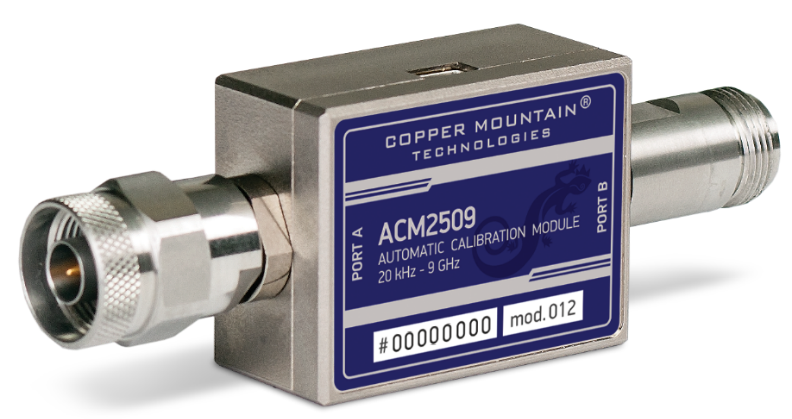Automatic calibration modules (ACMs) are special devices, which allow to automate the process of calibration. The ACM model is selected according to the parameters of the calibrated Analyzer: the working frequency range, the number of measuring ports, and the type of RF connectors. One of the models is shown in the image below.

Automatic Calibration Module
All ACM models and their specifications are available on the Copper Mountain Technologies website. Operating manual of ACM see in ACM Operating manual.
The ACM offers the following advantages over the traditional calibration, which uses a mechanical calibration kit:
•Reduces the number of connections of standards. Instead of connecting seven standards, it requires connecting only two ACM connectors.
•Reduces the calibration time.
•Reduces human error probability.
•Provides higher accuracy potentially.
The ACM has two RF connectors for connecting to the test ports of a two-port Analyzer and a USB-connector for control. The ACM contains electronic switches, which switch between different reflection and transmission impedance states, as well as memory, which stores precise S-parameters of these impedance states.
After connecting the ACM to the Analyzer, the analyzer software performs the calibration procedure automatically, i.e. switches between different ACM states, measures them, and computes calibration coefficients using the data stored in the ACM memory.